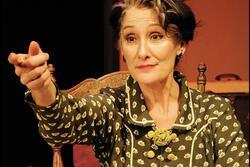More on the boys
There has been a recent flurry of attention to the issue of boys’ (and men’s) flagging participation in Jewish life, particularly in the synagogue—some going so far as to call this a crisis.
There’s a lot to say about this perceived “boy crisis” (some of which we’ve covered in a previous post), but what strikes me as a historian is that this sounds awfully familiar. These calls for alarm have been heard in every generation since the 19th century. Want some examples? From 1884: “were it not for the women and children -- God bless them -- and thanks to the introduction of family pews… our large and costly temple would be nearly empty.” From 1919: “the synagogues are abandoned to women, our men have largely abdicated.”
The truth is that American Judaism -- like American religion more generally -- has been, in part, defined by the presence and participation of women. Of course, in a Jewish context, women’s involvement and leadership was extremely limited well into the 20th century (and remains limited today in non-egalitarian communities). But despite these exclusions, the prominence of women in religious life is ingrained in the fabric of American Judaism.
The issue of diminishing male involvement in Jewish religious life was a central focus of the Union for Reform Judaism’s Symposium on Gender and Jewish Education earlier this month, reported on by JTA last week. The JTA article describes the rise in male-only rituals and activities in the Reform movement, developed as a tactic to attract men’s participation.
Though I am skeptical about the existence of a “boy crisis,” I think there definitely should be opportunities for men to explore their spirituality and their needs within Judaism. And I don’t necessarily have a problem with men-only contexts for that -- after all, as a feminist, I understand the power of having a safe space for this kind of exploration. I am wary, though, of gender segregation and the possibility that it will encroach into other aspects of Jewish life. It is one thing to have men’s retreats (I’ve enjoyed quite a few women’s retreats myself) but integration must remain -- in some cases, become -- a non-negotiable priority in certain spaces (the board room, for example).
This is particularly true given that women remain underrepresented in top positions in the Jewish community. As the JTA article reports, “Numerous studies reveal that more girls than boys participate in Jewish youth groups and attend summer camps. Women are more active in synagogues, Jewish community centers and federations, and are better represented than men at all levels except the top levels of governance” (emphasis mine). The problem is that this last phrase gets no attention in communal discussion of the “boy crisis.” There continues to be a serious glass ceiling in the Jewish community, and any study (or even conversation) about the lack of participation of boys and men should acknowledge and address this gender reality, too.
I attended the URJ Symposium (where I taught a well-attended workshop on integrating Jewish women’s history into Jewish education), and I had the opportunity to see one of the new resources designed for men’s rituals: “The Men’s Seder,” a Passover Haggadah meant to be used at men-only seders. I have to admit I found it…. well, bizarre, and a little sad. I think it’s great for men to develop some new rituals to explore their spirituality, but my first response to this attempt was that it felt so derivative. Women's seders have been tremendously successful, but we should be wary of having our creative expression co-opted through the introduction of men's seders. You can’t just take the model women have innovated, plug in some stories and ideas that relate to men, and, voila!, have an authentic and resonant men’s ritual. I was also struck by how much this particular resource was geared to older men. The list of men’s plagues included (I kid you not) prostate cancer and erectile dysfunction.
So I think there is still some work that needs to be done to figure out what it means to have meaningful men-centered rituals -- and men are going to have to do this work themselves. Some of the energy put into raising the alarm about the “boy crisis” might be better spent exploring just what it means for men to find their place in Jewish life.






